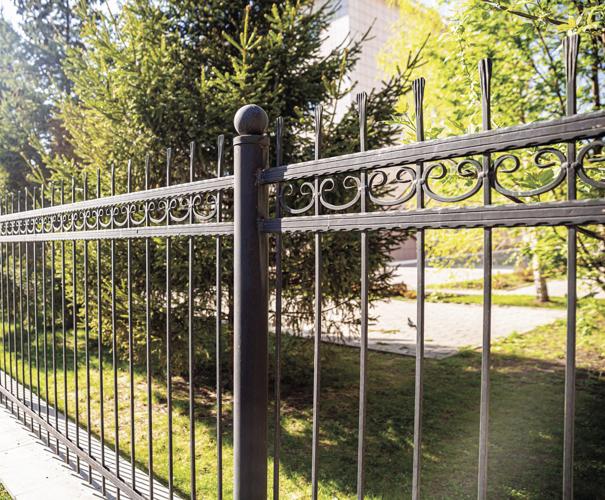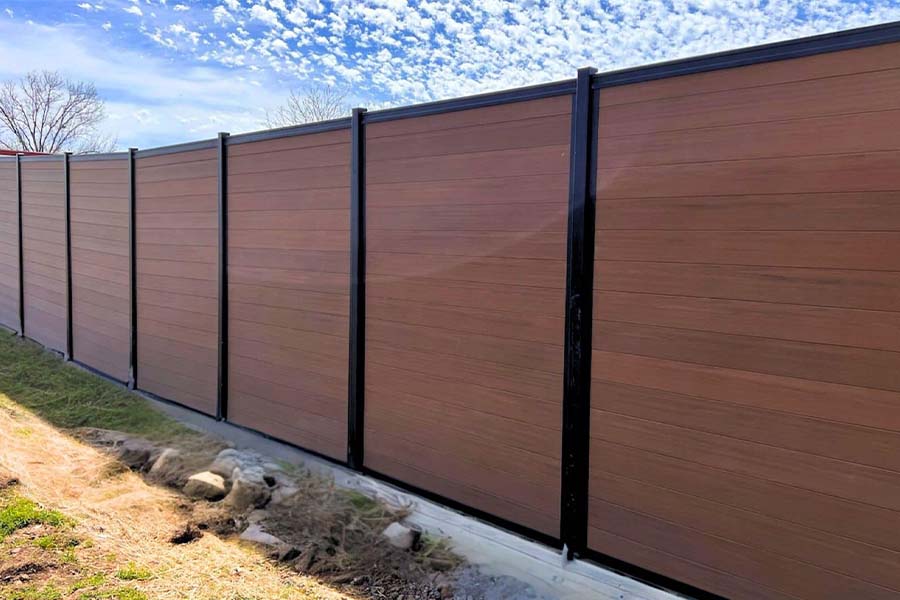Featured
Various locations have varying policies, and understanding what's called for will aid ensure that your fence is lawful, secure, and developed according to regional standards. Below's a guide to help you browse the permitting procedure for fence installation.
Why Are Allows Needed? Licenses are required to make sure that the installment of your fence fulfills neighborhood building regulations and zoning laws. These regulations remain in place to maintain the safety and security, look, and functionality of residential or commercial properties in your area. In addition, permits help stay clear of conflicts with neighbors pertaining to property lines, fence height, and various other structural details.
Local authorities need authorizations to monitor points like presence at crossways, public security, and potential damages to energies like water pipelines or electric lines. The procedure helps keep your fencing project compliant with safety and security and lawful requirements.
Kinds Of Licenses You May Require. The specific authorizations called for can differ depending on your area and the specifics of your job. Below are the most usual sorts of authorizations you might need:
Structure License. Several cities and areas call for a structure license for fencings that exceed a specific height, normally over 6 feet. This license makes sure that your fence adheres to structural criteria, especially if it's made from particular products such as concrete, steel, or brick. Building licenses are likewise necessary when your fencing influences the general landscape, like creating an or blocking a sightline.
Zoning License. Zoning licenses are provided to guarantee that your fencing follows regional zoning legislations. These regulations might regulate where fencings can be put on your property (e.g., side, front, or backyard), exactly how high they can be, and whether they can be set up near sidewalks or roads. Zoning legislations are put in location to preserve the overall aesthetic appeals of communities and keep website traffic safety.
Obstacle License. Some areas have setback regulations that identify how much a fencing must be from the home line, roadway, or certain public spaces. Setback permits are made to ensure that your fence doesn't hinder neighboring properties or public areas. A building study may be needed to confirm building lines prior to acquiring this kind of permit.
HOA Authorization. You might need to get authorization from the HOA prior to installing a fencing if you live in an area governed by a Homeowners Association (HOA) HOAs usually have strict standards about the type of fencing enabled in the area, including its material, height, and shade. Always inspect with the HOA prior to starting your task to avoid any disputes.
Exactly How to Get a Fence Authorization. The process for acquiring an authorization generally involves a number of actions:
Research Local Regulations. Start by examining your city or region's site to learn the certain needs for fencing installment. You may need to check out the regional preparation or building department face to face for more in-depth info.
Prepare Your Application. A lot of cities will certainly need an application, which consists of information concerning your prepared fence, such as:
![]()
The type of fence material (timber, plastic, chain-link, etc) The intended height of the fencing. The area and measurements of the fencing. A home survey (to validate home lines) Submit the Application. After finishing the application, submit it to the neighborhood building or zoning workplace. You might be called for to pay a charge depending upon your location and the dimension of your fence. Fees can differ, however they typically cover the price of refining your demand and examining your strategies.
Wait for Approval. Once your application is sent, the regional authorities will review your plans to guarantee they fulfill zoning and building demands. This procedure can take anywhere from a few days to a number of weeks, relying on the intricacy of the job and the quantity of authorization requests in your location.
![]()
If Necessary),Evaluation (. In many cases, you may need to set up an evaluation after the fencing is installed to ensure it meets the required requirements. Your local office will let you know if this action is essential.
When You Don't Required an Authorization. Not every fencing installation needs an authorization. Some scenarios where you might not require a license consist of:
Setting up a fence that's under a certain elevation (frequently 3-4 feet for front backyards) Replacing an existing fencing with one that is the exact same height and product. Setting up a temporary fence (e.g., for building or horticulture) Even if your job appears tiny, it's constantly advisable to check with local authorities to make certain you're following the proper procedure.
Effects of Not Obtaining a Permit. Mounting a fencing without the necessary authorization can bring about considerable effects, consisting of fines, removal of the fencing, and expensive reinstallation. In many cases, local authorities might need you to customize the fencing if it does not satisfy code demands. Furthermore, not getting an authorization can develop disagreements with neighbors, specifically if the fence is placed inaccurately or breaks regional elevation regulations.
Verdict. Prior to setting up a fencing, it is necessary to look into the specific allowing needs in your area. If a license is needed and to ensure that you're adhering to the appropriate treatment, contact your neighborhood building or zoning division to locate out. By safeguarding the proper authorizations, you'll stay clear of lawful problems and ensure that your fence setup is risk-free, compliant, and convenient.
Why Are Allows Needed? Licenses are required to make sure that the installment of your fence fulfills neighborhood building regulations and zoning laws. These regulations remain in place to maintain the safety and security, look, and functionality of residential or commercial properties in your area. In addition, permits help stay clear of conflicts with neighbors pertaining to property lines, fence height, and various other structural details.
Local authorities need authorizations to monitor points like presence at crossways, public security, and potential damages to energies like water pipelines or electric lines. The procedure helps keep your fencing project compliant with safety and security and lawful requirements.
Kinds Of Licenses You May Require. The specific authorizations called for can differ depending on your area and the specifics of your job. Below are the most usual sorts of authorizations you might need:
Structure License. Several cities and areas call for a structure license for fencings that exceed a specific height, normally over 6 feet. This license makes sure that your fence adheres to structural criteria, especially if it's made from particular products such as concrete, steel, or brick. Building licenses are likewise necessary when your fencing influences the general landscape, like creating an or blocking a sightline.
Zoning License. Zoning licenses are provided to guarantee that your fencing follows regional zoning legislations. These regulations might regulate where fencings can be put on your property (e.g., side, front, or backyard), exactly how high they can be, and whether they can be set up near sidewalks or roads. Zoning legislations are put in location to preserve the overall aesthetic appeals of communities and keep website traffic safety.
Obstacle License. Some areas have setback regulations that identify how much a fencing must be from the home line, roadway, or certain public spaces. Setback permits are made to ensure that your fence doesn't hinder neighboring properties or public areas. A building study may be needed to confirm building lines prior to acquiring this kind of permit.
HOA Authorization. You might need to get authorization from the HOA prior to installing a fencing if you live in an area governed by a Homeowners Association (HOA) HOAs usually have strict standards about the type of fencing enabled in the area, including its material, height, and shade. Always inspect with the HOA prior to starting your task to avoid any disputes.
Exactly How to Get a Fence Authorization. The process for acquiring an authorization generally involves a number of actions:
Research Local Regulations. Start by examining your city or region's site to learn the certain needs for fencing installment. You may need to check out the regional preparation or building department face to face for more in-depth info.
Prepare Your Application. A lot of cities will certainly need an application, which consists of information concerning your prepared fence, such as:

The type of fence material (timber, plastic, chain-link, etc) The intended height of the fencing. The area and measurements of the fencing. A home survey (to validate home lines) Submit the Application. After finishing the application, submit it to the neighborhood building or zoning workplace. You might be called for to pay a charge depending upon your location and the dimension of your fence. Fees can differ, however they typically cover the price of refining your demand and examining your strategies.
Wait for Approval. Once your application is sent, the regional authorities will review your plans to guarantee they fulfill zoning and building demands. This procedure can take anywhere from a few days to a number of weeks, relying on the intricacy of the job and the quantity of authorization requests in your location.

If Necessary),Evaluation (. In many cases, you may need to set up an evaluation after the fencing is installed to ensure it meets the required requirements. Your local office will let you know if this action is essential.
When You Don't Required an Authorization. Not every fencing installation needs an authorization. Some scenarios where you might not require a license consist of:
Setting up a fence that's under a certain elevation (frequently 3-4 feet for front backyards) Replacing an existing fencing with one that is the exact same height and product. Setting up a temporary fence (e.g., for building or horticulture) Even if your job appears tiny, it's constantly advisable to check with local authorities to make certain you're following the proper procedure.
Effects of Not Obtaining a Permit. Mounting a fencing without the necessary authorization can bring about considerable effects, consisting of fines, removal of the fencing, and expensive reinstallation. In many cases, local authorities might need you to customize the fencing if it does not satisfy code demands. Furthermore, not getting an authorization can develop disagreements with neighbors, specifically if the fence is placed inaccurately or breaks regional elevation regulations.
Verdict. Prior to setting up a fencing, it is necessary to look into the specific allowing needs in your area. If a license is needed and to ensure that you're adhering to the appropriate treatment, contact your neighborhood building or zoning division to locate out. By safeguarding the proper authorizations, you'll stay clear of lawful problems and ensure that your fence setup is risk-free, compliant, and convenient.
Latest Posts
Explore Brake Repair & More: Full Auto Care Solutions from Montclare Auto Repair
Published en
1 min read
Discover Exclusive Auto Repair Offers in Chicago at Montclare Auto Repair
Published en
1 min read
Learn About Leading Car Repair Care offered by Montclare Auto Repair – Quality Service Today
Published en
1 min read
More
Latest Posts
Explore Brake Repair & More: Full Auto Care Solutions from Montclare Auto Repair
Published May 27, 25
1 min read
Discover Exclusive Auto Repair Offers in Chicago at Montclare Auto Repair
Published May 26, 25
1 min read
Learn About Leading Car Repair Care offered by Montclare Auto Repair – Quality Service Today
Published May 23, 25
1 min read